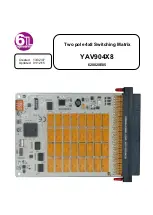
6
PKB
• Meldekontakte für Übertempe-
ratur (außer: 40-A-Version),
Überschreiten der Überwa-
chungszeit, zu geringen
Bremsstrom und Motorstill-
stand.
• Bremsschütz schaltet lastfrei
• LED-Anzeige:
- Netz
- Motor bereit
- Bremse aktiv
- zeitabhängige Bremsung
- s t i l l s t a n d s a b h ä n g i g e
Bremsung
- Übertemperatur
- Überwachungszeit abge-
laufen
• Fernbedienmöglichkeit für
Bremszeit, zweite Bremszeit
und handgesteuertes Ab-
bremsen
version), monitoring time
exceeded, braking current too
low and motor at standstill.
• Brake contactor switches
without load.
• LED display:
- power
- motor ready
- brake active
- brake until standstill
- brake for preset time
- monitoring time
- over temperature
• Remote control facility for
braking time, second braking
period and manual
controlled braking.
matique ou par coupure de
l'alimentation).
• Contacts d'info pour défaut
de température (sauf version
40A), détection d'arrêt,
dépassement du temps de
surveillance et défaut de
l'intensité de freinage
• Basculement hors charge du
contacteur de freinage
• LED de visualisation :
- tension d'alimentation
- moteur prêt
- frein actif
- freinage par réglage de temps
- freinage avec détection
d'arrêt
- défaut température
- Temps de contrôle dépassé
• Télécommande possible pour
temps de freinage,2ème temps
de freinage et pilotage du manuel
du freinage.
Description du
fonctionnement
Le frein compact PKB
permet le freinage de moteurs
asynchrones à champ tournant.
Le contacteur de freinage doit
être relié aux bornes U et V et un
contact à ouverture du contacteur
moteur aux bornes 6 et 7. A la
mise sous tension, le contact K1
se ferme et la commande du
moteur est autorisé (bornes 8-9)
La LED "Power" et la LED "Mo-
tor ready" sont allumées.Le
moteur peut être démarré.
Après l'arrêt du moteur, le
contact à ouverture du contacteur
moteur cablé sur les bornes 6-7
se ferme et enclenche le
processus de freinage. En même
temps le contact K1 s'ouvre et
empêche la commande du
moteur. Une temporisation de
sécurité t
v1
s'écoule.Au bout du
temps t
v1
, le contact K2 se ferme
et le contacteur de freinage colle.
La LED "Brake activated" est
allumée. Le thyristor T1 est piloté
après le temps t
v2
et l'intensité de
Description of operation
The PKB compact brake
decelerates three-phase
asynchronous motors. A brake
contactor must be connected to
terminal screws U and V and the
break contact of the motor
contactor must be connected to
terminals 6-7. After the operating
voltage is applied, contact K1
closes and enables the motor
control line (terminals 8-9). The
„Mains“ and „Motor ready“ LEDs
are illuminated. The motor can
be started.
After the motor is switched
off, the break contact of the motor
contactor closes at terminals 6-7
and initiates the braking process.
At the same time contact K1
opens and blocks the motor
control line. A safety period t
v1
elapses.
After t
v1
has elapsed, contact
K2 closes and the brake
contactor advances. The „brake
active“ LED is illuminated. Thy-
ristor T1 is triggered after the
safety period t
v2
has elapsed and
a braking current flows via
terminals U and V to the motor.
Funktionsbeschreibung
Die Kompaktbremse PKB
bremst Drehstromasynchron-
motore ab. An die Anschlußklem-
men U und V muß ein Brems-
schütz und an die Klemmen 6-7
der Öffnerkontakt des Motor-
schütz angeschlossen sein. Nach
Anlegen der Versorgungs-
spannung schließt der Kontakt
K1 und gibt die Motorsteuer-
leitung (Klemmen 8-9) frei. Die
LED "Netz" und die LED "Motor
bereit" leuchten. Der Motor kann
gestartet werden.
Nach Abschalten des Mo-
tors schließt der Öffnerkontakt
des Motorschütz an den Klem-
men 6-7 und löst den Bremsvor-
gang aus. Gleichzeitig öffnet der
Kontakt K1 und sperrt die Motor-
steuerleitung. Eine Sicherheits-
zeit t
v1
läuft ab.
Nach Ablauf von t
v1
schließt
Kontakt K2 und das Bremsschütz
zieht an. Die LED "Bremse ak-
tiv" leuchtet. Der Thyristor T1
wird nach Ablauf der Sicherheits-
zeit t
v2
getriggert und ein Brems-
strom fließt über die Klemmen
U und V zum Motor. Nach Ab-
Artisan Scientific - Quality Instrumentation ... Guaranteed | (888) 88-SOURCE | www.artisan-scientific.com








































